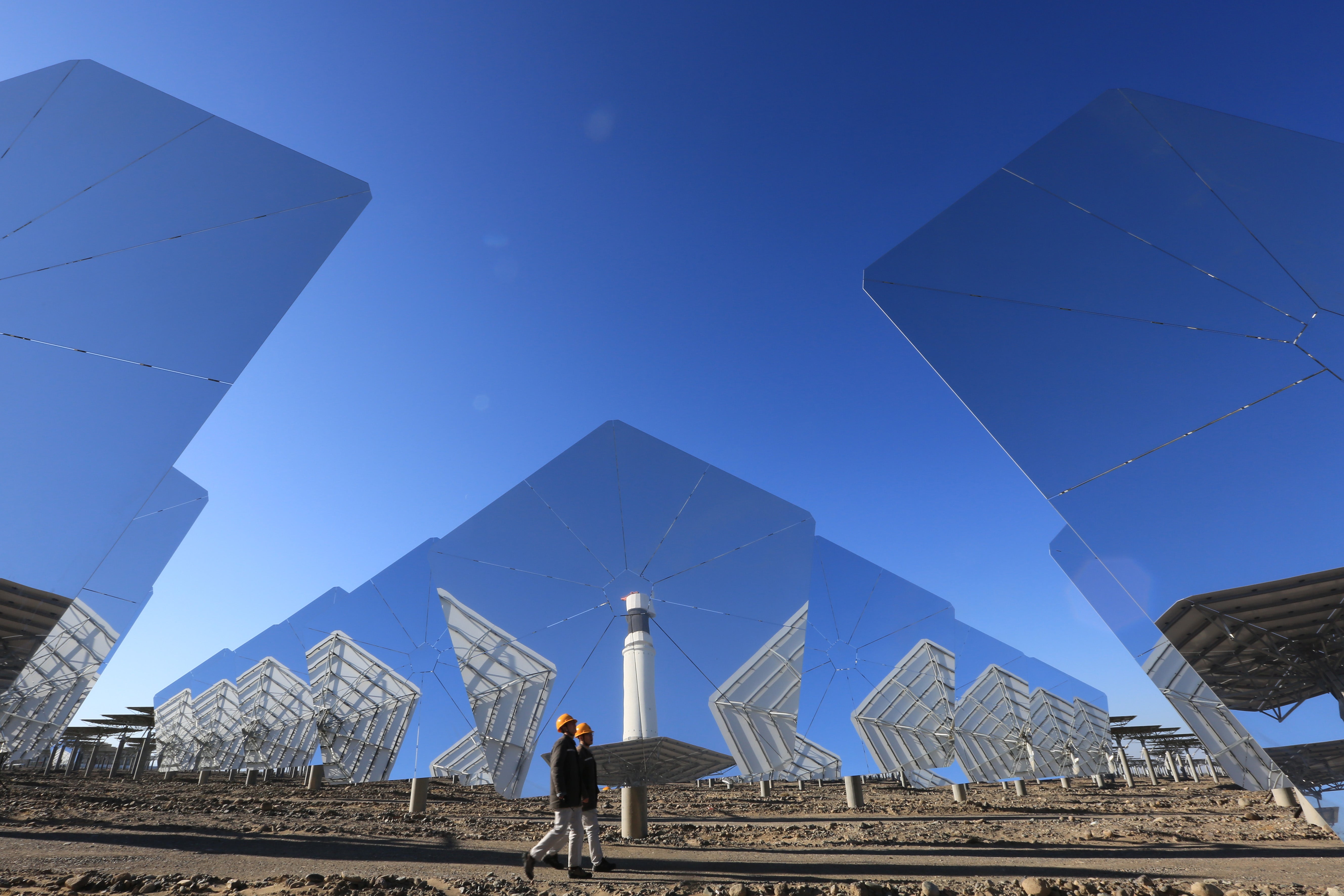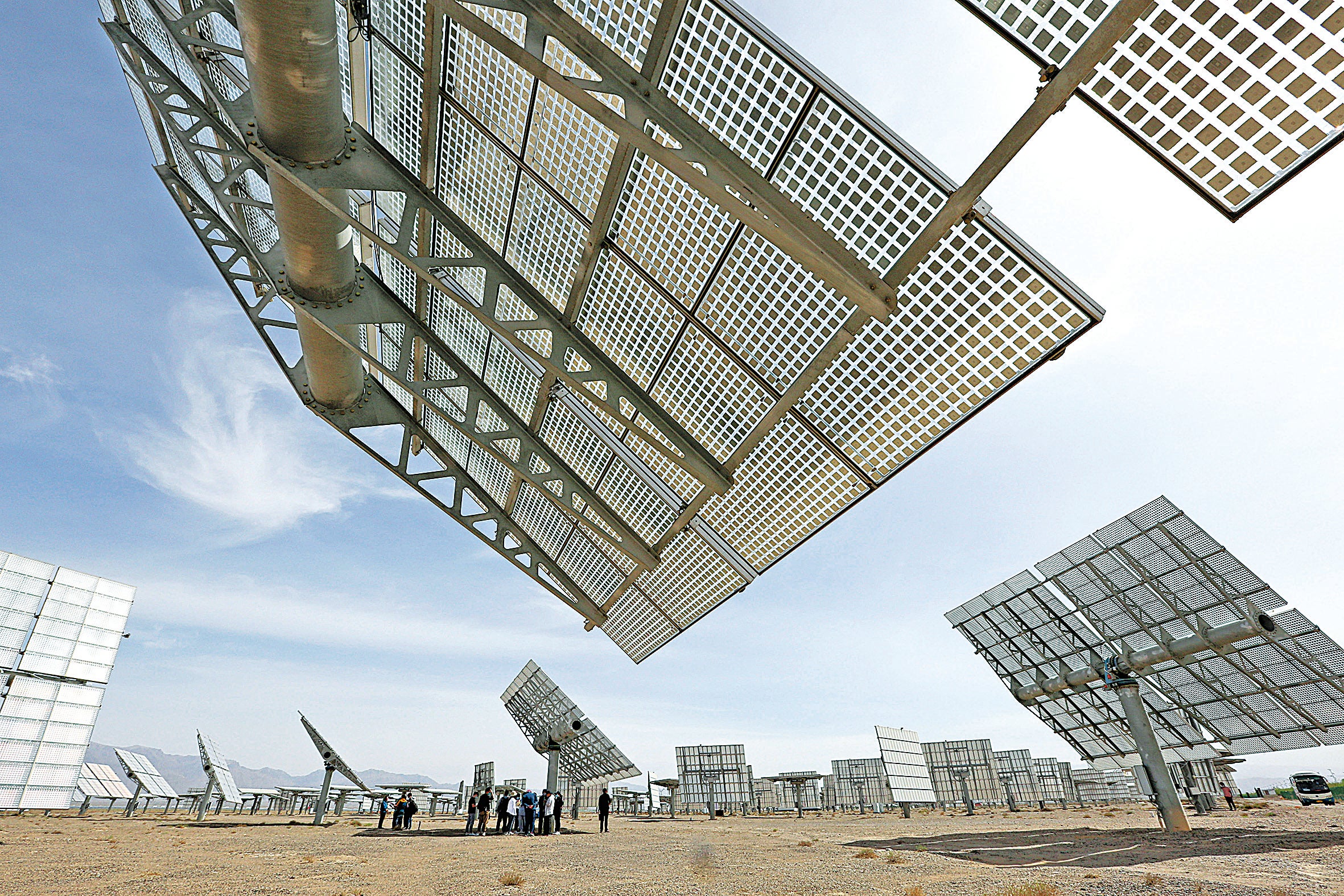Desert sun and winds pack potent punch
THE ARTICLES ON THESE PAGES ARE PRODUCED BY CHINA DAILY, WHICH TAKES SOLE RESPONSIBILITY FOR THE CONTENTS

Technologies will power the next wave of wind and solar power development in China’s desert areas amid higher requirements for uninterrupted power generation and transmission, facing challenges from extreme conditions such as high temperatures and blowing sand, experts say.
“We are deploying technological innovations to upgrade systems for equipment monitoring and inspection, as it is unlikely workers can carry out regular checks in such a big power plant under severe conditions,” said An Bo, head of five photovoltaic (PV) power stations, as well as a facility responsible for connecting 26 PV stations to the grid.
The stations An manages were built by China Huadian Corporation Ltd. They are about 17 miles from downtown Hami, Xinjiang Uygur autonomous region, and occupy about 1.7 square miles.
“PV station installation requires areas with vast available empty spaces and high average solar radiation, making arid areas far from cities ideal locations,” An said. “Some stations are located as far as about 124 miles from downtown Hami. However, installation, operation and maintenance of solar panels in these areas are not easy. For instance, stress from extreme weather conditions can trigger performance degradation.”
Frequent strong winds carrying sharp grains of sand can lead to sand accumulation on PV modules and even damage, which can cause difficulties in cleaning and maintenance tasks, An said.
“In response, we have leveraged artificial intelligence to replace human staff for routine inspections. We have a digital platform that can receive notice in the event of short circuits or other malfunctions. The platform can also collect data regarding sand accumulation on PV modules and decide on the timing and frequency of cleanings that will keep costs to a minimum.”

Before taking up his current position in 2021, An was head of a wind farm in Hami.
“Similar to the PV station, strong winds and sandstorms can easily cause equipment degradation at wind farms, which can lead to insufficient power generation,” he said. “Now many wind farms in Hami have adopted infrared and ultrasonic technologies on wind turbines to improve performance for better power generation efficiency.”
Guo Dongliang, head of a PV station in Kashgar, Xinjiang, said the station has also adopted a smart maintenance system, and a video monitoring and alerting system for more efficient system inspections.
“We have a system that is a virtual representation of PV equipment with real-time data update, simulation and machine learning to help staff conduct remote-controlled maintenance more precisely and efficiently.”
The growing use of high-tech new energy methods has emerged alongside China’s scaling up of new energy deployment in the Gobi Desert and other arid areas, a major step in the country’s green transition campaign.
The first batch of wind and solar power projects announced in desert areas in 2021 accounts for 97 gigawatts in total. According to a notice co-released by the National Development and Reform Commission, China’s top economic regulator, and the National Energy Administration, about 40 per cent of the first batch of projects are wind power generation projects, while about 60 per cent are solar power generation projects. Most of the projects will be completed and connected to the grid in 2022 and 2023.
The second batch of wind and solar power projects, targeting at 455 GW, will also be located in desert areas, according to a package of policy measures aiming to stabilise the economy announced by the State Council in May.
“Development of clean energy projects in desert areas requires co-ordination of various factors including energy from natural resources like wind and solar, energy generated from fossil fuels like coal as a supplement, energy storage and power transmission,” said Lin Boqiang, dean of the China Institute for Studies in Energy Policy at Xiamen University, in Fujian province.
